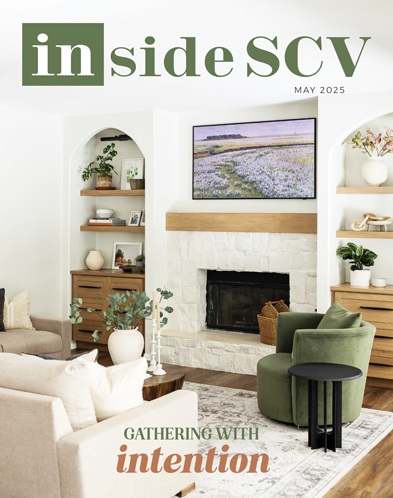YOUR HOME - EXTERIOR LOOKS
Fall Solutions
for a Yard You'll Love Year Round
November, 2016 - Issue #145
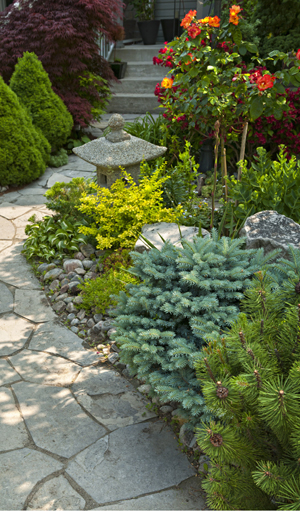 courtesy of Shutterstock |
If you had a hose and needed to water your lawn and a succulent, would you water each the same amount? Of course not! Most of us intuitively know that different types of plants have different watering needs. But our irrigation systems are not necessarily set up according to plant types. When you create hydrozones, you create zones of plants with the same water needs.
Cool-season turf grass, which many of us have in our landscapes, has the highest water needs of any landscaping plant in the Santa Clarita Valley. For irrigation, it is best to keep your turf grass on its own zone (or valve), without any trees or shrubs irrigated at the same time. If you have a mixed irrigation zone with grass, trees and shrubs, your trees and shrubs will most likely be over-watered.
Trees and shrubs can be put on a drip irrigation system fairly easily. Drip irrigation will literally drip water at the base of the plant, which is about the same rate at which our clay soils can absorb it. It is extremely effective. When choosing a sprinkler type for a landscape zone (Remember, you need the same sprinkler type for the entire zone.), it is important to consider a few factors:
• type of plant (groundcover, shrub or tree)
• terrain (flat or slope)
• soil type (clay or sandy)
With any sprinkler type, it is important that it is installed and maintained according to the manufacturer's recommendations. Pay particular attention to recommended operating pressure, sprinkler spacing and nozzle adjustment. All irrigation systems, including drip, need periodic inspections and regular maintenance.
For more information, review the sections on Irrigation (bubblers, rotating spray nozzles and drip) of the Lawn Replacement Class Study Guide. conservation.clwa.org
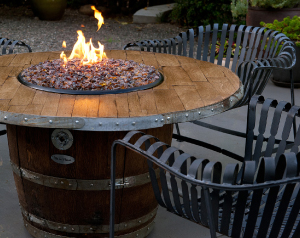 |
Fire pits fashioned from retired wine barrels are all the rage with wine enthusiasts everywhere. The Enthusiast Barrel Fire Pit Top offers authentic seals from wineries all over the world. Whether you prefer an oaky California Chardonnay or a fruity Sangiovese from Italy, wine lovers alike now have the perfect place to enjoy their favorite glass of vino while keeping warm and cozy year round. Oasis Garden & Patio carries an assortment of these one-of-a-kind firepits ranging from chat height to bar height to fit everyone's needs. Pair the fire pit with club chairs, dining chairs or bar stools and you will be ready to pop the cork this weekend with Oasis's free assembly and delivery offered to SCV residents.
Oasis Garden & Patio 255-9909
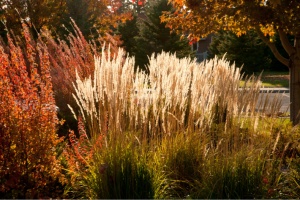 courtesy of Shutterstock |
In Santa Clarita, spring and fall are optimal times to plant thanks to temperate weather and the chance of more moisture courtesy of Mother Nature. Even though fall may bring some showers, it's prudent to consider that California is still in a severe drought. So, when you plant your seasonal color and texture for ultimate curb appeal, consider two things:
1. Choose Drought-friendly Plants Yes, it's tempting to "go for color" when variation becomes more sparse as summer comes to an end, but remember that many ornamental plants at the big-box home stores aren't built for water consumption. Work with a landscape specialist with experience developing bold, water-sipping designs or, for those who prefer DIY, take advantage of the pro knowledge at specialized garden centers.
2. Attractive, water-conserving design depends not just on the plants you select, but how you place them. Straight rows may honor your Type-A personality, but for more aesthetic pleasure, choose a design that adds depth and texture to your landscape. A simple way to do this is to plant your selections or seeds in a hexagonal "off set" pattern. You'll group plants closer in proximity to each other, meaning that you'll have more density of plants. That keeps the soil below the leaf line cooler, limiting water evaporation.
NV Landscape, Inc. 286-8888
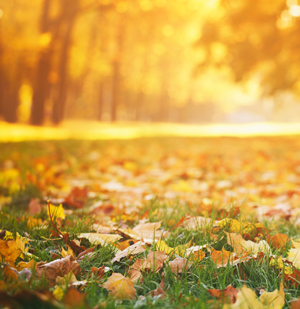 courtesy of Shutterstock |
Pests can become a problem for any homeowner. You need to know where to look for the insects around the house, especially this time of year, when insects and pests will begin to seek more permanent shelter from inclement weather. Early detection and professional pest control can prevent a full-scale infestation that will cause you nothing but headaches. Here are some of the most common areas where you will find hidden pests.
Inside Walls Many pests hide inside the walls of your home. These are dark, narrow and usually warm spaces where there is little interference from outside forces. Pests could easily start large colonies, damage the house and breed uncontrollably.
Piles of Yard Debris Piles of yard debris are usually hiding spots for all types of pests. This includes piles of leaves, stacks of firewood or mounds of trimmed tree branches. Try to keep it several feet away from your home.
Pet Food The insects could be hiding in the food dishes that you leave out for your pets. They could also be in the large bags of pet food.
Crawl Spaces & Attics Crawl spaces and attics are popular hiding spots for pests because they are often unoccupied for long periods and are dark. Crawl spaces are usually very warm and humid. Attics contain insulation and ventilation systems that pests can use to stay comfortable and out of sight.
CVA Exterminators 253-3070
|
||||||||||||||||||||||||||||
